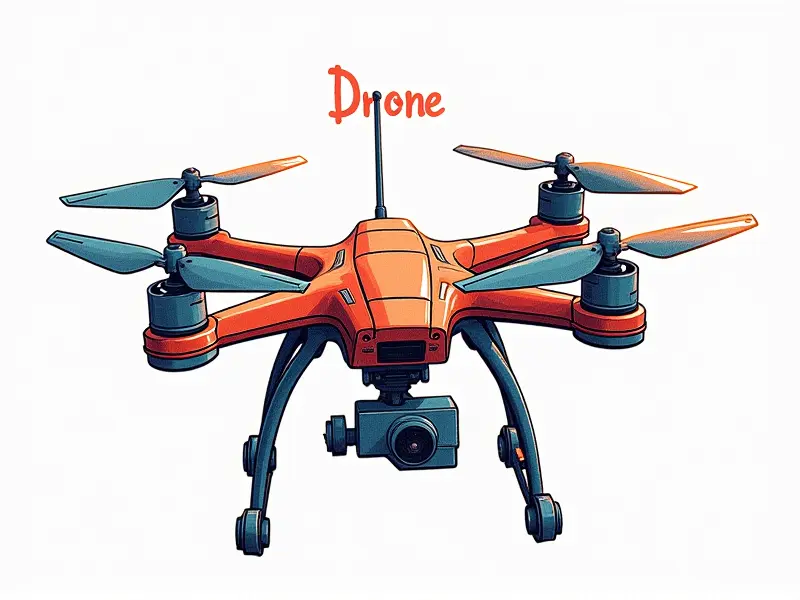Drone altitude hold feature?

Drone Altitude Hold Feature: Why Every Pilot Needs It?
The altitude hold feature is a crucial aspect of modern drones that significantly enhances their performance and usability. This article delves into the importance of altitude hold for drone pilots, explaining how it works, its benefits, and tips for effective use.
Why Every Pilot Needs Altitude Hold
Altitude hold allows drones to maintain a constant height above ground level (AGL) without manual intervention. This feature is essential for several reasons:
- Safety: It prevents the drone from accidentally descending or ascending, reducing the risk of crashes.
- Stability: Altitude hold ensures consistent flight stability, making it easier to capture high-quality aerial footage.
- Efficiency: Pilots can focus on controlling yaw and pitch movements while altitude is automatically managed.
Understanding Drone Autopilot Altitude Control
The altitude hold feature operates through advanced sensors and algorithms that continuously monitor the drone's position relative to the ground. Key components include:
- Sensors: Barometric pressure sensors, GPS, and ultrasonic sensors work together to detect changes in altitude.
- Algorithms: Sophisticated software processes sensor data to adjust motor power and maintain a steady flight path.
Enhancing Flight Stability with Altitude Hold
Altitude hold significantly improves flight stability by:
- Maintaining consistent height, even in windy conditions.
- Reducing the need for constant manual adjustments to maintain altitude.
- Allowing pilots to focus on other aspects of control and maneuverability.
Tips for Using Drone Altitude Hold Effectively
To maximize the benefits of altitude hold, consider these tips:
- Calibrate Sensors: Ensure all sensors are properly calibrated before each flight to maintain accuracy.
- Select Optimal Settings: Adjust settings based on environmental conditions and desired flight characteristics.
- Practice in Controlled Environments: Start with simple maneuvers in open areas to build confidence and proficiency.
Benefits of Drone Altitude Hold Mode
The advantages of altitude hold mode include:
- Better Aerial Photography: Consistent height ensures steady shots, ideal for capturing landscapes or portraits.
- Easier Navigation: Pilots can navigate more confidently knowing the drone will maintain a stable altitude.
- Enhanced Safety: Reduced risk of accidental descent or ascent improves overall flight safety.
Troubleshooting Common Issues with Altitude Hold
Common issues and their solutions include:
- Inaccurate Height Readings: Check sensor calibration and ensure no obstructions are interfering with readings.
- Drone Drifts Up or Down: Adjust motor power settings to compensate for wind conditions or other external factors.
The Role of Altitude Hold in FPV Racing
In first-person view (FPV) racing, altitude hold plays a critical role by:
- Maintaining Speed and Control: Pilots can focus on speed and maneuvering without worrying about maintaining height.
- Improving Visibility: Consistent altitude helps maintain clear line of sight, crucial for navigating tight courses.
Optimal Altitude Hold Settings Explained
To achieve optimal performance with altitude hold:
- Adjust Sensitivity Levels: Fine-tune sensitivity based on the drone's weight and environmental conditions.
- Select Appropriate Modes: Use modes designed for specific flight scenarios, such as acrobatic or cinematic flights.
Enhance Your Flight Skills with Altitude Hold
Pilots can improve their skills by:
- Practicing Manual Adjustments: Start without altitude hold to understand how manual adjustments affect flight stability.
- Experimenting with Different Settings: Test various settings in different environments to find the best configurations.
Improving Your Drone's Altitude Control
To enhance your drone’s altitude control:
- Upgrade Sensors: Consider upgrading to more advanced sensors for better accuracy and reliability.
- Update Firmware: Keep firmware up-to-date to benefit from the latest improvements in flight stability algorithms.
Understanding Drone Hover Stability
Hover stability is crucial for maintaining a steady position during aerial photography or videography. Altitude hold contributes significantly by:
- Maintaining Consistent Height: Ensures the drone remains at a fixed altitude, reducing camera shake.
- Reducing Manual Corrections: Minimizes the need for constant adjustments, allowing smoother shots.
Conclusion
The altitude hold feature is an indispensable tool for drone pilots seeking to enhance flight stability, safety, and overall performance. By understanding how it works, optimizing settings, and practicing effectively, you can unlock new levels of proficiency in your aerial adventures.

